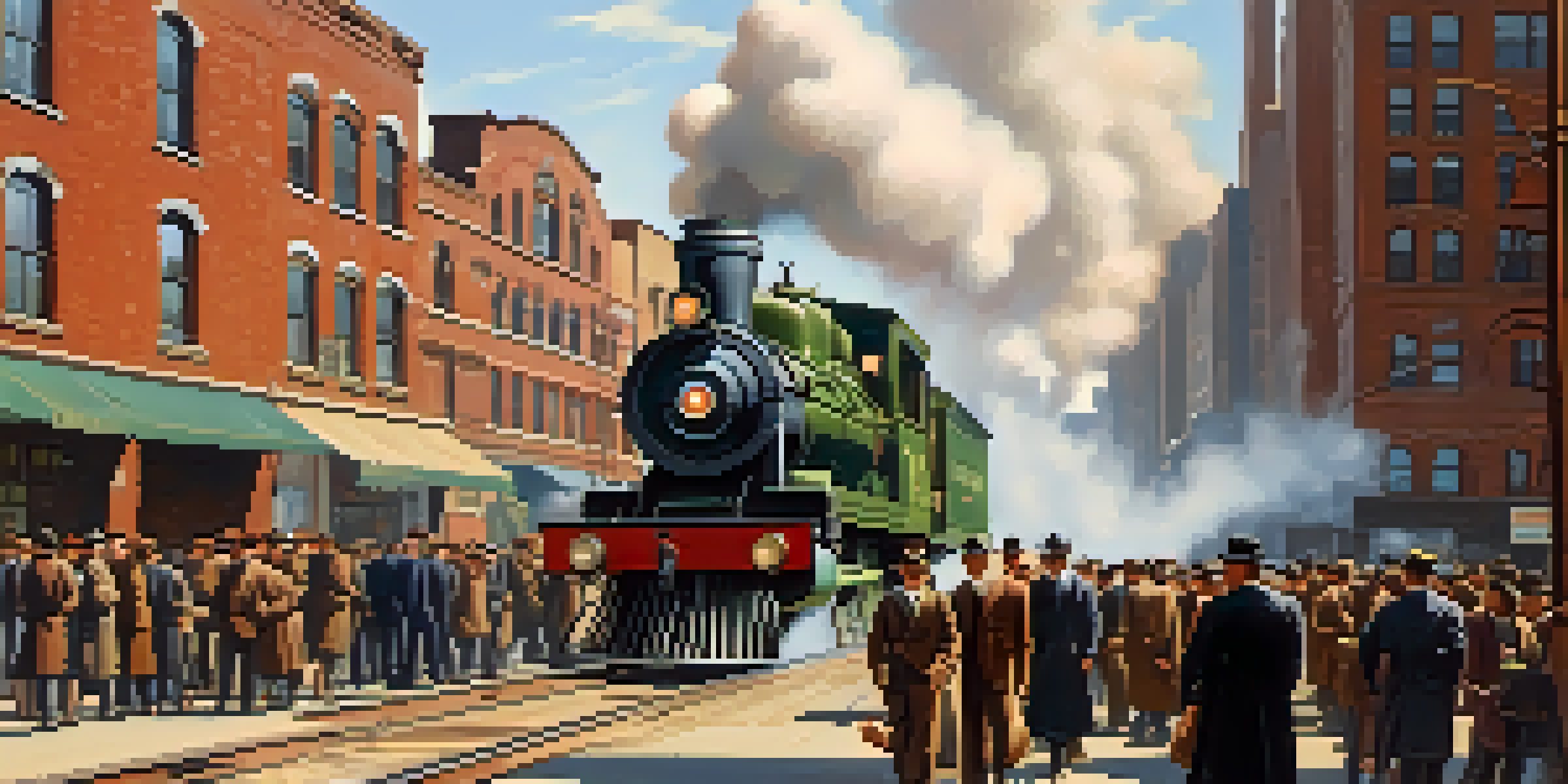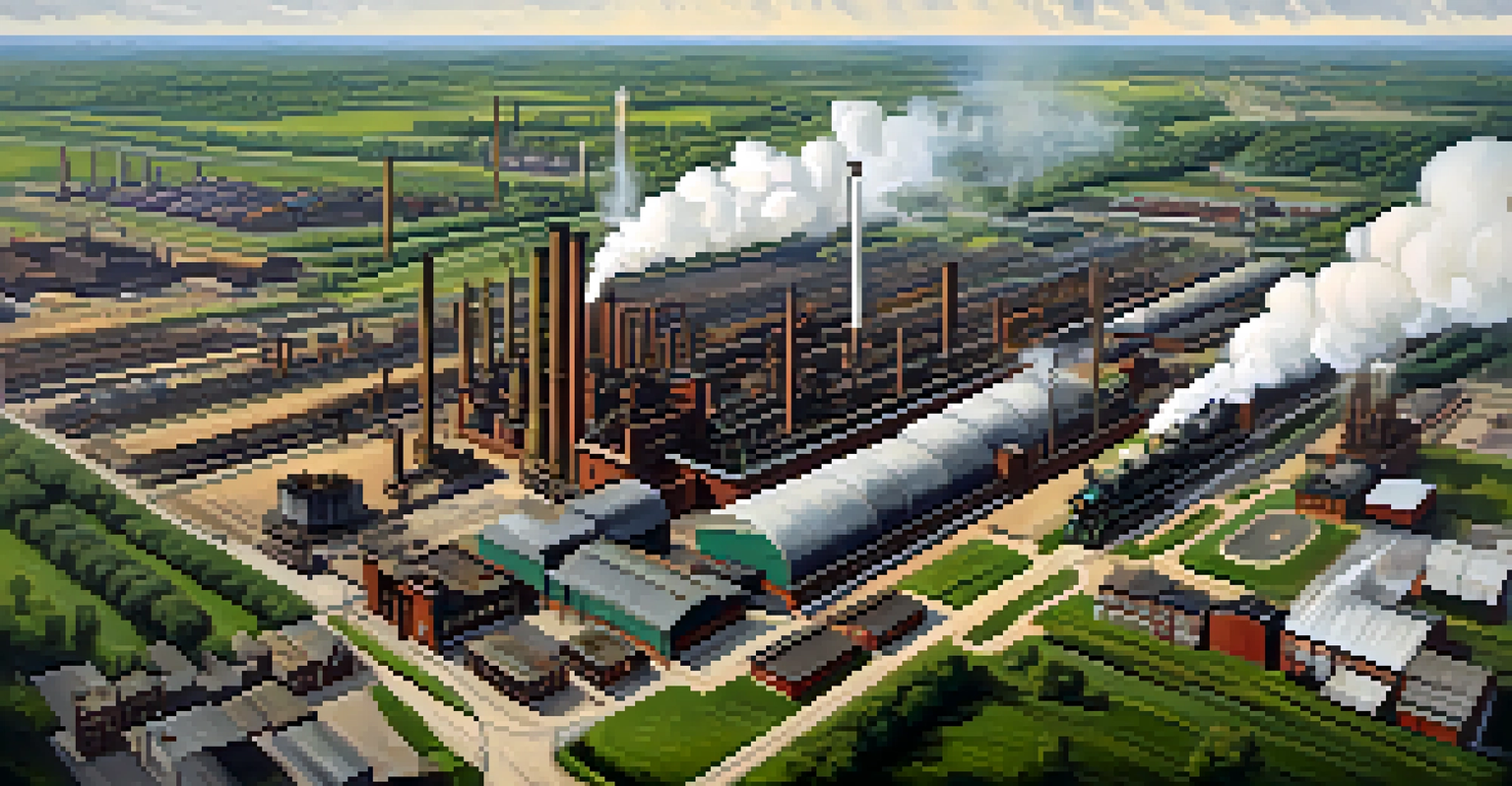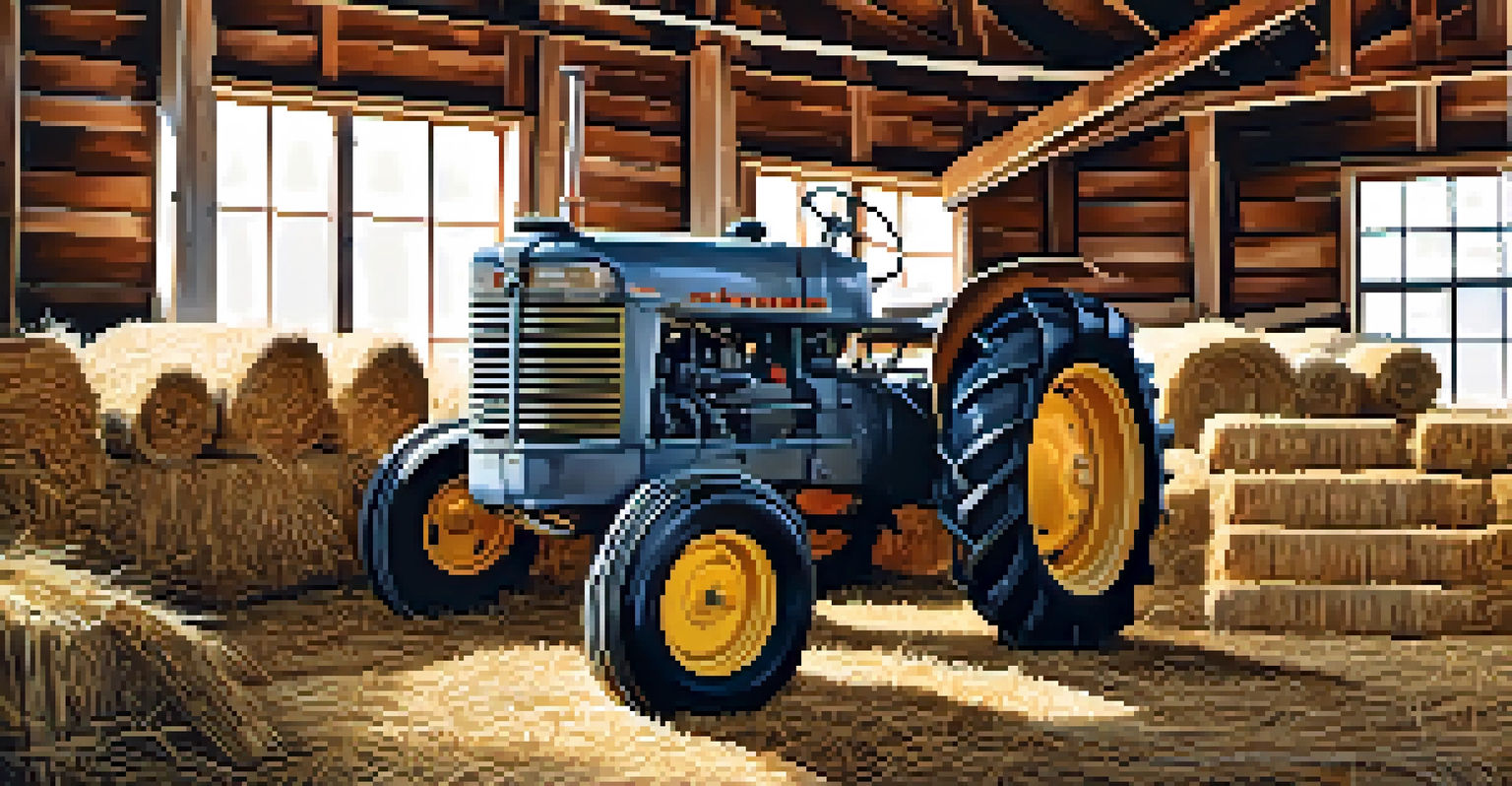The Industrial Boom: How Illinois Transformed in the 20th Century

The Rise of Industry: A Brief Overview
In the late 19th and early 20th centuries, Illinois emerged as a powerhouse of industry. With its strategic location and rich resources, the state became a magnet for manufacturing and innovation. Cities like Chicago became bustling centers for factories, drawing in workers from across the nation.
The greatest danger in times of turbulence is not the turbulence; it is to act with yesterday's logic.
The industrial boom didn't just happen overnight; it was the result of various factors. The availability of raw materials like coal and iron, combined with a growing transportation network, made it easier for industries to thrive. This shift led to significant economic growth and job creation, laying the foundation for modern Illinois.
As factories sprang up, they transformed the landscape of Illinois. New neighborhoods were built to accommodate the influx of workers, and the state saw a dramatic demographic shift. The hustle and bustle of industrial life started to define the character of Illinois, marking the beginning of a new era.
Transportation Revolution: Railroads and Beyond
One of the key drivers of Illinois' industrial boom was its transportation network, particularly the expansion of railroads. By connecting various regions, railroads facilitated the easy movement of goods and people. This connectivity not only spurred local economies but also positioned Illinois as a vital link in national trade.

As railroads flourished, so did the economy. Goods produced in Illinois could be shipped across the country, creating a demand for local industries. This interconnectedness led to the establishment of businesses that supported the transportation sector, from manufacturing train cars to providing services for freight handling.
Industrial Growth Transformed Illinois
The late 19th and early 20th centuries marked Illinois as an industrial powerhouse, driven by manufacturing, innovation, and a booming workforce.
Beyond railroads, other forms of transportation also played a crucial role. The development of highways and waterways further enhanced Illinois' appeal as an industrial hub. These advancements made it easier for businesses to operate efficiently and opened new markets, fueling continued growth throughout the century.
The Birth of Major Industries: Steel and Agriculture
During the industrial boom, Illinois became synonymous with steel production. With the establishment of large steel mills, cities like Joliet and East Chicago became vital contributors to the national economy. This sector provided thousands of jobs and shaped the industrial landscape.
The future belongs to those who prepare for it today.
Agriculture also saw a transformation during this period, thanks to advancements in technology and farming practices. Illinois became a leading producer of corn and soybeans, contributing significantly to the state’s economy. The rise of agribusiness highlighted the interconnectedness of industry and agriculture, showcasing how both sectors could thrive.
The synergy between steel and agriculture paved the way for innovations that would benefit both industries. For instance, steel was crucial for creating modern farming equipment, which in turn increased crop yields. This collaboration illustrated how diverse industries could support and enhance one another.
Labor Movement: Workers' Rights and Struggles
As industries expanded, so did the workforce, leading to significant changes in labor dynamics. Workers faced long hours, low wages, and unsafe conditions, sparking a wave of labor movements. These movements aimed to address inequalities and promote workers' rights, fundamentally altering the industrial landscape.
Labor unions began to form, advocating for better working conditions and fair pay. Strikes and protests became common as workers united to demand their rights. This collective action not only raised awareness but also led to legislative changes that improved labor standards across the state.
Transportation Fueled Economic Expansion
The expansion of railroads and other transportation systems linked regions, facilitating trade and supporting the growth of local industries.
The labor movement played a crucial role in shaping modern Illinois. The struggles and triumphs of these workers laid the groundwork for future generations, ensuring that workers' rights became a priority in the industrial narrative. Their legacy continues to influence labor policies today.
Urbanization: The Shift to City Living
With the industrial boom came urbanization, as people flocked to cities in search of jobs and opportunities. This migration led to significant population growth in urban areas, particularly in Chicago. The rapid influx of residents transformed the social and cultural fabric of these cities.
As cities expanded, so did the need for infrastructure. New housing developments, schools, and hospitals were built to accommodate the growing population. This urban growth not only changed the physical landscape but also fostered a sense of community and diversity among residents.
However, urbanization also brought challenges, including overcrowding and inadequate living conditions. City planners and policymakers faced the task of addressing these issues, leading to initiatives aimed at improving urban living. The dynamic interplay between growth and challenges shaped the evolution of Illinois cities throughout the century.
Technological Advancements: Innovations that Changed Everything
The 20th century was marked by incredible technological advancements that revolutionized industry. In Illinois, innovations like assembly line production and automation transformed manufacturing processes. These changes increased efficiency and productivity, allowing businesses to scale up operations.
With the advent of new technologies, industries began to diversify. From textiles to machinery, Illinois became a breeding ground for innovation. The state's commitment to research and development fostered an environment where creativity thrived, leading to groundbreaking inventions that had a lasting impact.
Cultural Shifts Amid Industrialization
As diverse populations flocked to urban areas, they enriched Illinois' cultural landscape, influencing art, social movements, and community identity.
These technological advancements not only reshaped industries but also influenced everyday life. As new products flooded the market, consumers experienced a shift in lifestyle and expectations. This era of innovation illustrated how technology could drive economic growth while enhancing the quality of life for residents.
Cultural Impact: How Industry Shaped Illinois Identity
The industrial boom in Illinois didn't just transform the economy; it also had a profound cultural impact. As diverse populations moved to cities, they brought their traditions, languages, and customs, enriching the cultural tapestry of the state. This melting pot of influences created a vibrant community that celebrated diversity.
Art, music, and literature flourished during this period, reflecting the experiences of industrial workers and their families. Local artists and writers found inspiration in the changing landscape, producing works that captured the spirit of the time. This cultural renaissance helped define what it meant to be an Illinoisan.

Furthermore, the challenges faced by workers during the industrial boom inspired movements in social justice and equality. The fight for workers' rights and better living conditions became intertwined with broader societal issues, shaping the moral compass of the state. Illinois thus emerged not only as an industrial leader but also as a beacon of cultural and social change.